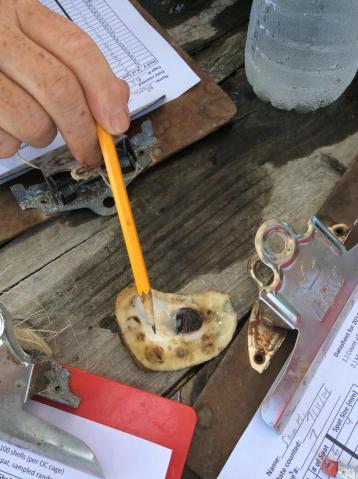

Outbreaks of this disease have been subject to statutory control in GB since 2010. is a notifiable disease under The Aquatic Animal Health (England and Wales) Regulations 2009. Oyster herpesvirus-1 microvariant (OsHV-1 µvar).The FHI is responsible for health certification of fish and shellfish movements from other countries, and runs an enforcement programme aimed at preventing the illegal importation of these animals. Its primary role is to act for Defra and Welsh Government (WG) in undertaking statutory and inspection duties resulting from the EU fish health regime and other national legislation in the area of fish and shellfish health. The Fish Health Inspectorate (FHI), based at Cefas’ Weymouth laboratory, is dedicated to maintaining and improving fish and shellfish health in England and Wales. Cefas is an executive agency of the Department for Environment, Food and Rural Affairs (Defra).There are no implications for human health.Īny suspicion of the presence of OsHV-1 in Pacific oysters should be immediately reported to:Įmail to Friday, 9am to 5pm 01305 206700

In addition England and Wales continues to have OsHV-1µVar control areas in the Essex creeks (Colne, Mersea and Blackwater), along the north Kent coast and within Poole Harbour, Dorset. OsHV-1 µvar is an emerging disease that has been associated with high levels of mortality in Pacific oysters in France, Jersey and some bays in the Republic of Ireland. OsHV-1 µvar affects Pacific oysters and can result in high rates of shellfish mortalities.
Oyster spat mortality rate free#
Only a few areas in Europe continue to remain free from OsHV-1. gigas also contribute to spread of OsHV-1. Unrestricted movement of oysters is associated with a high risk of spread of OsHV-1.

Effective disinfection of seawater effluent from depuration and holding facilities will minimize the risk of transmission of infectious agents. Discharge of untreated seawater from depuration plants remains a potential mode of transmission of diseases affecting bivalves and other marine life. aestuarianus and oyster mortality has not been established. Owing to a lack of information, the causal relationship between V. francensis was detected in France in 2001 in moribund oysters since then this bacterium has been regularly detected during oyster mortality events. Studies performed since 2010 has provided strong evidence that OsHV-1 µVar is causally linked to increased oyster spat mortality at sea water temperatures above 16 ☌. Similar outbreaks were reported in 2010-11 from Australia and New Zealand. gigas) was observed in France and other European countries from 2008 onwards. A new pattern of mass mortality of Pacific oysters ( C. aestuarianus and 4) feasibility, availability and effectiveness of the disease prevention and control measures. This updated scientific opinion on oyster mortality addresses 1) the role of ostreid herpesvirus (OsHV-1) in mortality, 2) evidence for a role of Vibrio aestuarianus in mortality, 3) effectiveness of water treatment in inactivating OsHV-1 and V.


 0 kommentar(er)
0 kommentar(er)
